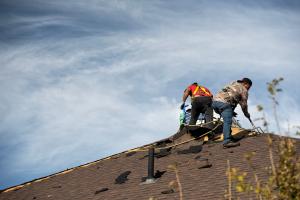Roofing Materials Designed to Withstand Hurricanes and Severe Storms
Hurricane-force winds, hail, and flying debris all pose a threat to roofing integrity. Certain materials offer higher resilience than others”
WISCONSIN RAPIDS, WI, UNITED STATES, July 7, 2025 /EINPresswire.com/ -- As regions across the United States face an increase in extreme weather events, the demand for storm-resistant roofing systems continues to rise. Property owners seeking durability in high-wind and hurricane-prone areas are turning to specific roofing materials known for impact resistance, uplift strength, and long-term performance under stress.— Thad Brown
Dynamic Alliance Roofing LLC, based in Wisconsin Rapids, Wisconsin, has released updated guidance on materials designed to perform reliably under extreme weather conditions. With over four decades of roofing experience, Thad Brown, owner and founder of the company, emphasizes the importance of matching material performance to environmental risks when selecting a roofing system.
“Hurricane-force winds, hail, and flying debris all pose a threat to roofing integrity. Certain materials offer higher resilience than others, particularly when installed to code and paired with structural reinforcements,” said Brown.
While Wisconsin is not directly impacted by hurricanes, the increasing frequency of wind events and hailstorms in the Midwest mirrors the broader trend toward climate extremes. The following materials are recognized for their ability to perform in severe weather zones:
Metal Roofing Systems
Standing seam and interlocking metal panels have become a leading choice in wind-prone regions due to their structural locking systems and high uplift resistance. These roofs are often rated to withstand wind speeds of 140 mph or more when properly anchored. The smooth, continuous surface also helps prevent wind uplift along edges and corners—common failure points during hurricanes.
In addition to wind performance, metal roofs offer impact resistance against hail and flying debris. Steel and aluminum options are treated with coatings to resist corrosion and UV breakdown. Maintenance typically includes fastener checks, flashing inspections, and debris removal after storms.
Concrete and Clay Tiles
Heavier roofing materials such as concrete and clay tiles offer natural resistance to uplift due to their weight and secure anchoring systems. When fastened with appropriate storm clips and underlayment, tile roofs can meet high-wind code requirements in coastal and southern hurricane zones.
Tile systems do require structural support and careful installation to prevent cracking or displacement under impact. Post-storm inspections are important to identify individual tile movement. Proper underlayment systems can prevent water infiltration even when outer tiles are damaged.
Synthetic Roofing Materials
Composite shingles and polymer-based tiles are engineered to replicate traditional aesthetics while providing enhanced impact and wind resistance. Many synthetic materials are tested for Class 4 impact ratings and designed to resist wind speeds exceeding 110 mph.
These systems offer flexibility under stress, reducing the risk of cracking or tearing during wind gusts or hailstorms. Lightweight compared to natural tile, synthetic systems can often be installed without structural reinforcement, making them a popular choice in retrofit applications.
Asphalt Shingles – High-Performance Grades
Standard asphalt shingles have a wind resistance range of 60 to 80 mph, but high-performance asphalt products are available with ratings up to 130 mph. These shingles feature reinforced nailing zones, improved adhesive strips, and thicker construction for durability.
Installation is critical to performance. Proper nailing patterns, starter strip placement, and roof deck preparation all affect wind resistance. In areas with frequent wind-driven rain, synthetic underlayments can provide a second layer of protection beneath asphalt systems.
Roof Deck Reinforcement and Underlayment
Material choice alone does not guarantee storm resistance. The performance of any roof in a hurricane or severe storm is closely tied to the strength and condition of the roof deck. Plywood thickness, nail spacing, and the use of sealant tapes at seams can all improve resilience.
Underlayments—particularly self-adhered membranes—serve as the final barrier against water intrusion if the outer material is breached. In high-risk regions, enhanced underlayment systems are often required by building codes and insurance carriers.
Installation and Code Compliance
Building code compliance and manufacturer specifications are essential in storm-prone areas. Many roofing systems can only reach their rated performance if installed under exact conditions, including wind-rated fasteners, edge metal, ridge vent systems, and proper flashing.
Brown notes that extreme weather installations require attention to detail and a clear understanding of both local code requirements and product limitations. “Performance depends on more than just the material label. Wind resistance starts with proper fastening, structural support, and the right components working together,” said Brown.
Inspection and Maintenance Post-Storm
Even the most durable roofing systems require follow-up inspections after a major storm. Hidden damage, such as lifted shingles, bent fasteners, or compromised flashing, can lead to moisture intrusion over time. Regular inspections help identify vulnerabilities early and extend the service life of any roofing material.
In the face of more frequent and severe storms, roofing resilience is no longer limited to coastal regions. Midwestern communities are experiencing increasing hail intensity and straight-line winds, making storm-resistant materials a practical consideration across a wider geographic range.
By selecting materials engineered for high-wind zones and ensuring compliance with modern building codes, property owners can reduce storm damage risk and lower long-term maintenance costs. The roofing system becomes not only a protective barrier, but also a critical component of structural survival in the face of extreme weather.
Morgan Thomas
Rhino Digital, LLC
+1 504-875-5036
email us here
Visit us on social media:
Facebook
Legal Disclaimer:
EIN Presswire provides this news content "as is" without warranty of any kind. We do not accept any responsibility or liability for the accuracy, content, images, videos, licenses, completeness, legality, or reliability of the information contained in this article. If you have any complaints or copyright issues related to this article, kindly contact the author above.


